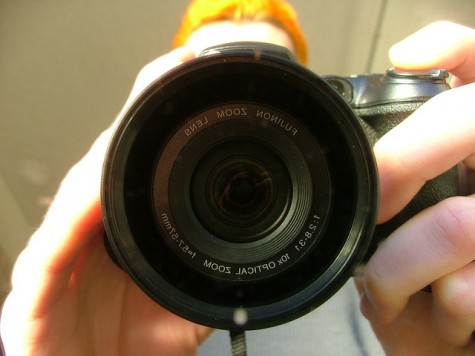
Source: Andrew Mason, Flickr, CC-licensed
I’ve been known to write the occasional photography article over at Lifehacker, but I’m hardly a photography expert, or even the person on-staff with the most photo experience. Still, I know a thing or two, and these tips are spot on. They can improve your digital photos, but if you’re still shooting with film–either by preference or by nostalgia–they can help there too. Here’s just one as an example:
Camera Handling
Today’s hi-tech cameras are admittedly pretty amazing, and while they may seem like it, they’re not yet capable of taking the pictures themselves. That’s where you come in. Very few amateurs I see have good camera technique. Follow these basic guidelines and you can increase your odds of getting sharp accurate shots. It’s not a difficult skill set to acquire, but more a matter of mindfulness; like learning to hold the steering wheel at 10 & 2.There was a National Geographic special a couple years ago about President Obama’s staff photographer, Pete Souza. While the whole show is great, what fascinated me most was watching how Pete held his camera. He was master of this stuff and it was obviously second nature to him. Even the big boys master the fundamentals.
First things first. Spread your feet a little and straight up so that your hands have a good platform to work from. Think of yourself as a walking talking camera tripod, or bipod more accurately. Next, keep most of the weight of the camera in your left hand. On a SLR style camera this usually means cradling the camera in your hand from underneath near the junction of the camera body and the lens with your thumb and first few fingers wrapped on either side of the lens. This keeps the camera from bouncing around when you press the shutter. Work on holding the camera steady this way, as if you’re a waiter and the camera is a tray full of drinks.
And the biggest technique mistake I see people make is that they press the shutter with such force that the camera shakes, the result being blurry pictures. This is especially true if you’re taking pictures indoors without a flash (which you should try to master by the way; these shots look better than the flat bright pictures you get with on-camera flash). Practice pressing the shutter without moving the camera (The stable left hand underneath should help). Also try half-pressing the shutter to lock focus and exposure. That way when you actually want to take the shot, the shutter will require only a tad more pressure and will be nearly instantaneous. Most of all become deliberate and conscious of what you’re doing. Eventually this will become your natural way to shoot.
I’m surprised that Bill Wadman, the author of the piece, didn’t choose to make this one his first tip, but all of them are solid regardless. If you’re looking to take your photos to the next level, the whole list is worth a look, even if some of the tips seem like common sense–but then again, common sense isn’t that common if the entire piece needed to be written, now is it?
[ On Taking Pictures :: Simple Tips To Dramatically Improve Your Photographs ]
